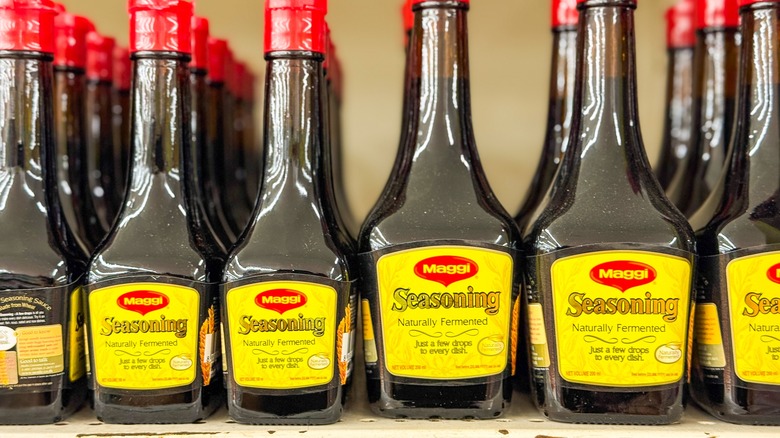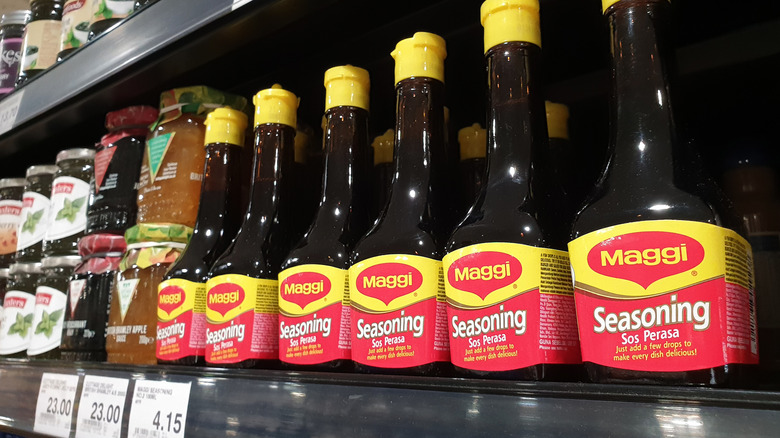It's Been Around For 140 Years But This Condiment Still Doesn't Get The Recognition It Deserves In The US
We may receive a commission on purchases made from links.
Many say it's the perfect solution when your recipe needs something but you aren't quite sure what. Its parent company, Nestlé, estimates that 4,600 portions of food containing Maggi seasoning were served every second in the 2000s. In 2019, it was ranked the third most recognized global CPG brand, behind Coca-Cola and Colgate. There are at least five versions sold in the United States and nine worldwide. It's used in Southeast Asian cuisine, Mexican cooking, African food, and European dishes. Yet, Maggi seasoning is still relatively unknown in the U.S. and Canada.
The original Maggi sauce, Maggi Wurze, was introduced in Switzerland in 1886. The brand, which includes bouillon cubes, seasoning packages, noodles, and soup mixes, was acquired by that other Swiss giant, Nestlé, in 1947. The recipe for the original Maggi and its different versions varies from country to country, but has generally been described as similar to Worcestershire sauce, Marmite, and soy sauce. Several of the recipes contain hydrolyzed vegetable protein, a flavor enhancer made from the amino acids found in soybeans, corn, or wheat, including glutamate. Despite the comparisons and Maggi's use as a substitute for soy sauce, Maggi has a distinct umami flavor all on its own.
Competition from Worcestershire sauce kept Maggi from American tables
While it's hard to know why Maggi never took off in the United States, it's been speculated that it may have been due to early competition from the heavily advertised Lea & Perrins Worcestershire sauce. Maggi's umami flavor was used to bring meaty flavor to vegetarian dishes in countries that didn't eat meat or couldn't afford to eat meat. North Americans were more accustomed to getting that flavor from meat itself.
Despite Maggi's lack of recognition in the U.S., those who use it tend to buy one of two versions sold in North America – Maggi Jugo, which is often used for Mexican food, and Maggi Seasoning, which is used in Southeast Asian and European cuisines. Many Americans became familiar with Maggi from immigrant parents who used the seasoning to cook favorite foods from their countries of origin and the tradition stuck with subsequent generations. Others became familiar with it by eating at ethnic restaurants, especially Mexican, Indian, and Vietnamese. In Mexico, it's used for salsa, marinades, fillings, and micheladas, a cocktail that takes beer to the next level. Still others may have come across it during their travels, since Maggi is often found alongside the salt at restaurants in Mexico and next to the chutneys in India.
Chefs say Maggi is a great addition to a variety of dishes including bánh mì, ceviche, and kati rolls. Maggi seasoning adds flavor to marinades, can be a dipping sauce all on its own, and used in salad dressings. Given its broad applications and deep flavor, you may just want to add it to your list of the best umami-boosting ingredients.

